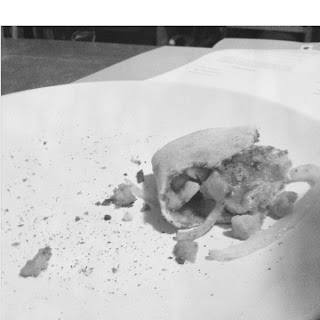Greetings!
 My name is Matthew Kerwin and I’m a student at St. Edwards University in Austin, Texas. Over the years I have been exposed to many different foods from many different cultures. You could say I’m well traveled since I have lived and visited countries including Scotland, Singapore, Indonesia, and Canada, as well as a plethora of cities and states across the US. Each of these places has a slice of individuality, history, and love to offer your palate. As a result of my travels, I started to discover and try new foods and in turn I became more aware of what is really good for your body and what isn’t. I have found that though the greater the industrialization of the city/town/country brings tourism and wealth, it is not necessarily indicative of the quality of the food one experiences. Most mass produced foods are of poor quality not just in taste, but nutrition as well, meaning the countries struggling with obesity epidemics are simultaneously struggling with malnutrition. Seriously. One of the best ways for the body to absorb nutrients is for it to be consumed in its most natural state. Unprocessed, unrefined, and unpasteurized—organics. Though current “trends” are making this way of life/cooking more accessible, there are still obstacles in the way of making it as mainstream and accessible as it should be—deciphering “certification” levels, pricing differences, and where to buy organics.
My name is Matthew Kerwin and I’m a student at St. Edwards University in Austin, Texas. Over the years I have been exposed to many different foods from many different cultures. You could say I’m well traveled since I have lived and visited countries including Scotland, Singapore, Indonesia, and Canada, as well as a plethora of cities and states across the US. Each of these places has a slice of individuality, history, and love to offer your palate. As a result of my travels, I started to discover and try new foods and in turn I became more aware of what is really good for your body and what isn’t. I have found that though the greater the industrialization of the city/town/country brings tourism and wealth, it is not necessarily indicative of the quality of the food one experiences. Most mass produced foods are of poor quality not just in taste, but nutrition as well, meaning the countries struggling with obesity epidemics are simultaneously struggling with malnutrition. Seriously. One of the best ways for the body to absorb nutrients is for it to be consumed in its most natural state. Unprocessed, unrefined, and unpasteurized—organics. Though current “trends” are making this way of life/cooking more accessible, there are still obstacles in the way of making it as mainstream and accessible as it should be—deciphering “certification” levels, pricing differences, and where to buy organics. The purpose of this blog is to inform and help people, especially college students learn how to buy and cook with organic foods. The problem is most people don’t read the ingredients on the back of food labels. As a result, they don’t know what they're digesting or trying to digest for that matter. In reality, depending on what kinds of food you eat it can be more detrimental than beneficial for you. Even if you are one of those compulsive people that read labels you probably can’t pronounce or recognize the majority of the ingredients listed. For those of you that do try and eat relatively healthy you might want to double check what you’re eating. Even if something looks healthy it doesn’t mean that it really is. In fact, the foods that look almost “too fresh and symmetrically perfect” like vegetables or fruits, chances are they are dyed with some type of chemical that make them look that way. In actuality you’re better off buying organic produce that tends to be a little uglier and deformed, but don’t let this discourage you because more often than not, the food that looks a little rough around the edges could end up having more natural vitamins, nutrients and a better taste.
Now you may be thinking to yourself “so what…” “What are the benefits of eating organic food over conventional food anyway?” Well, organic food differs from conventional food in the way it’s grown, handled and produced. For instance, organic food is produced without synthetic fertilizers, genetically modified organisms, antibiotics, hormones, and most conventional pesticides. What constitutes as organic? Things that are single ingredient foods like fruit, vegetables, milk, meat, cheese and eggs and multi ingredient foods that contain between 95% and 100% organic ingredients may be certified organic. Where can you get organic food, you ask? Most supermarkets have a wide variety of organic foods, but the downside of buying from the supermarket is that it’s hard to trace it back to the original source. This is why you should buy from a local farmers market or for you Austinites, check out Whole Foods Market, Wheatsville Co-op, or Central Market places like these have a wide variety of organic products for you to enjoy.
Every week I will spotlight an organic dish that is cheap on the wallet, easy to make and most of all really healthy for you! I will even offer recipes for the college student on the go! Come by every week to get access to new recipes, discussions, and interactive cooking videos.
Thanks for stopping by :)

No comments:
Post a Comment